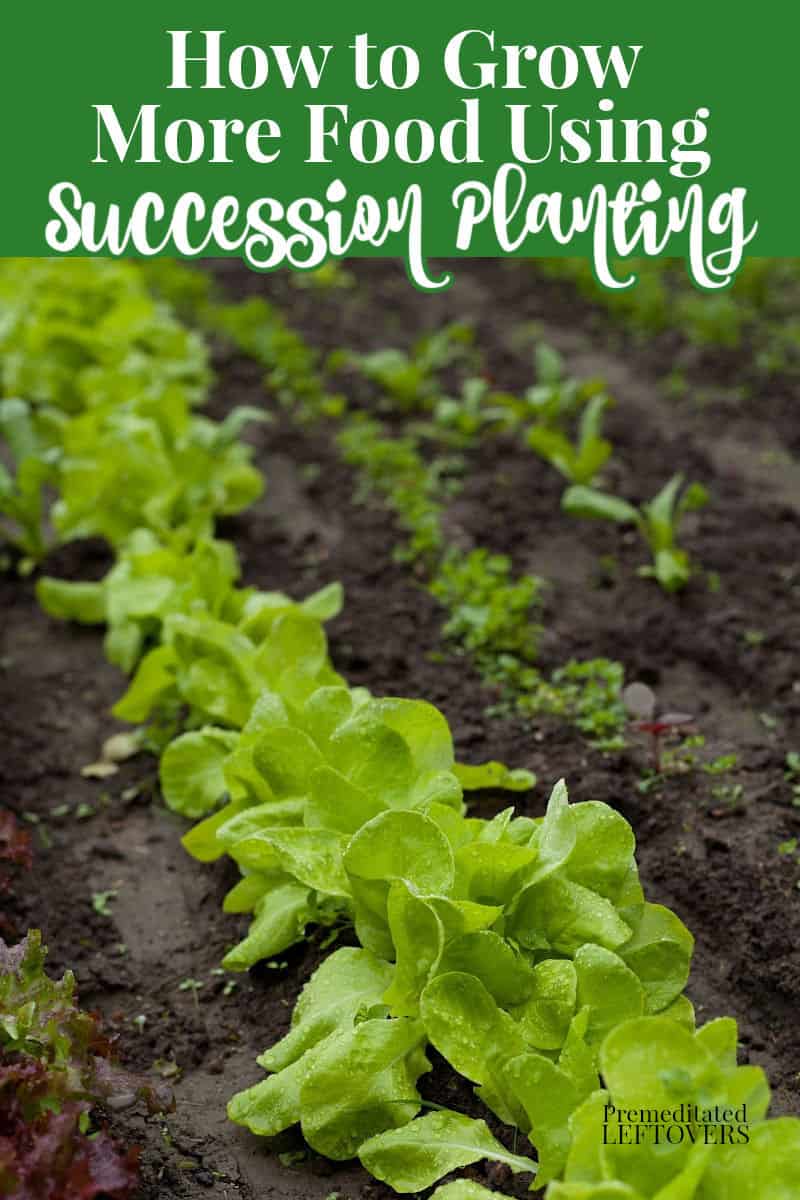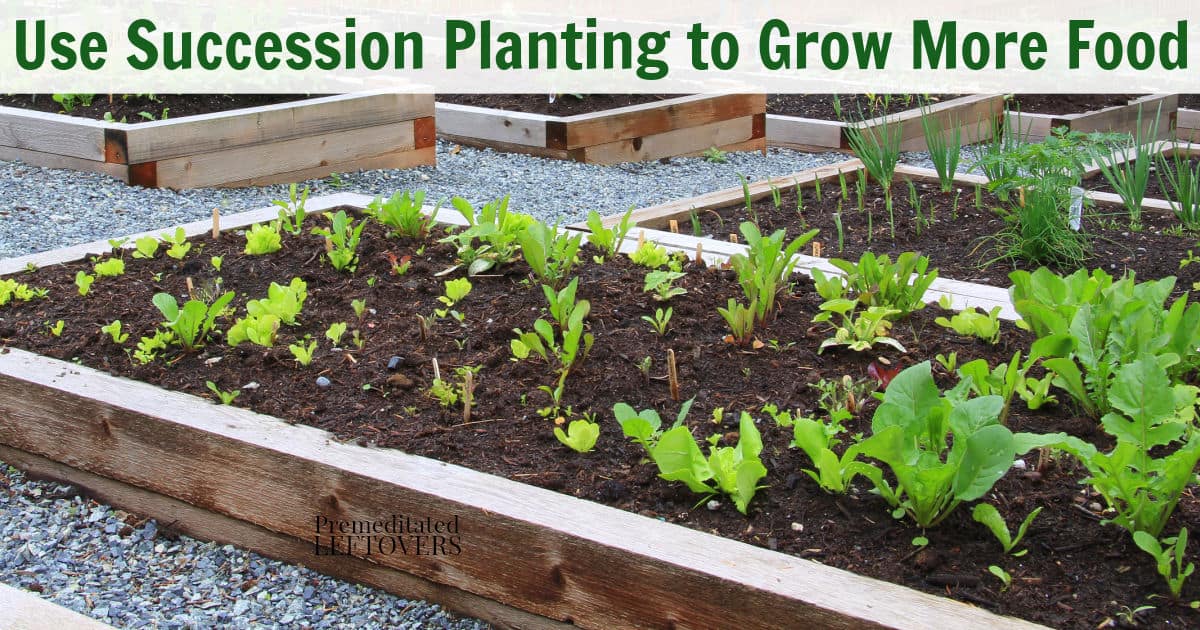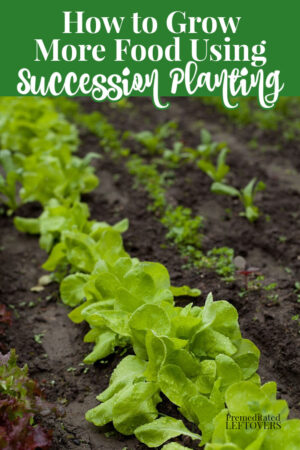You can use Succession Planting to grow more food in your garden while also reducing the overwhelm of having too much of one vegetable ripen at the same time.

We are not one crop farmers! We are backyard gardeners and hobby homesteaders. We don’t have to use the same methods that farmers use in our home garden.
Instead of harvesting your vegetables just once, wouldn’t it be more awesome to harvest them continually over the summer? You can grow more food with succession planting than you can with just regular planting. Succession planting is when you continually grow the same plant in the same space over the course of the growing season.
How to Use Succession Planting to Grow More Food
One of the easiest ways to explain succession planting is with lettuce. This week, spread lettuce seeds over a container of seedling mix and water them in well. You can start harvesting the baby leaves in as little as 2-3 weeks. Every week, add more seeds to this same container of the seedling mix. In turn, you will be able to harvest lettuce every week as you put more seeds down. This only works for lettuce varieties that you don’t want to grow a head. Try mesclun, looseleaf varieties, spinach, Radicchio, and Romaine – just harvest before the heads are formed.
Succession planting works well for carrots and radishes too. Instead of seeding weekly, sow seeds every 2-3 weeks. Also, anytime you harvest the carrot or radish (they’re ready when they pop their shoulders out of the ground), plant another seed in that hole. By succession planting in these two ways, you can double what you will harvest from both the carrots and the radishes.
Another way to succession plant is by staggering your planting schedule. For instance, if you plant a determinate tomato plant today, all of the tomatoes will ripen at the same time. You can start tomato seeds a couple of weeks apart so that the plants ripen at different times.
Good Vegetables for Succession Planting
7-Day Intervals
- Lettuce – Mesclun, Looseleaf, Romaine, Radicchio
- Spinach
14-Day Intervals
- Beets
- Kale
- Kohlrabi
- Tomatoes
- Carrots
- Radish
- Peas
- Peppers
- Bush beans
- Turnips
- Potatoes
21-Day Interval
- Arugula
- Carrots
- Cucumbers
- Melons
- Squash



Star says
Great advice and support ideas, thank you from Texas!